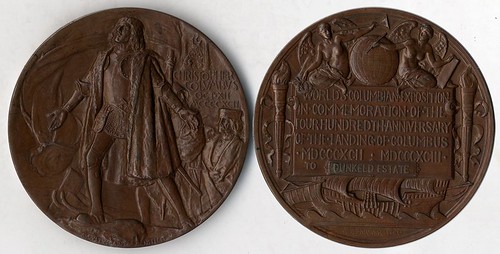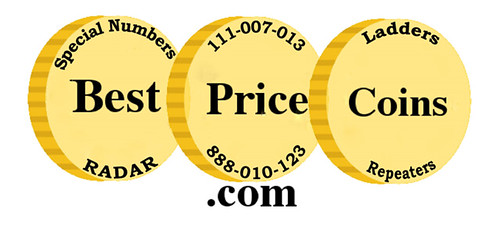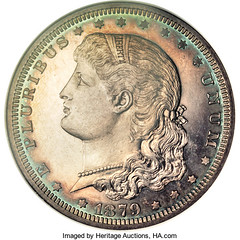
PREV ARTICLE
NEXT ARTICLE
FULL ISSUE
NOTES FROM E-SYLUM READERS: JANUARY 7, 2018Query: 1893 Columbian Exhibition Medal Winners Sought  Geoff Bell writes: Could any of our readers tell me where I can locate a list of people/businesses/others who were awarded medals at the 1893 Columbian exhibition? Thank you. Well, I know there were a number of books written by and about the Expo, and I have seen coffee-table size works that are quite elaborate. Some of these, if they were published
afterwards, may contain rosters of medal winners. I would check Google Books, Internet Archive (www.archive.org) and Hathi Trust (www.hathitrust.org/).
Can anyone suggest a particular title or report that might include this information? Another source would be contemporary newspapers - no doubt there were daily accounts of the announced winners, but of course it would be easier if there were a post-event report listing them all together. Above is an image of a large bronze Columbian Exposition medal by Augustus Saint Gaudens (obverse) and Charles Barber (reverse). -Editor To read the earlier E-Sylum article, see: On Naming Pattern Coin Designs Saul Teichman submittted these notes on pattern coin names. Thanks! -Editor
The "Schoolgirl" dollar considered to be one of the most beautiful designs ever. The schoolgirl name dates back to the April 1891 New York Coin and Stamp sale auction of the F.W. Doughty collection and was apparently given by David Proskey. This is noted by Edgar Adams on page 367 of the October 1911 edition of The Numismatist. Regarding the Doughty coin, it was purchased by Clay (H.P. Smith) and is apparently the piece sold in the 1906 Chapman brothers sale of his collection and was purchased there by John Story Jenks. From there it was purchased by J. H. Clapp according to a named copy of the Jenks sale which was offered in a Kolbe book auction over a decade ago. From there it went to Eliasberg and was sold in the Bowers & Merena sale. As for the other “named” patterns, the Doughty sale was the first to use the term Amazonian for the 1872 silver patterns and Wash-lady for the 1879 silver patterns. It is believed that Proskey is the source for all of these “names”. To visit the uspatterns site, see: To read the earlier E-Sylum article, see: Model Crowns and Model Coinage
The replacement of the British copper coinage by bronze in 1860 is well known, but for 15 years before various people, some of them interested in going decimal at the same time, were pumping their ideas out. Model coins, doubling up as children's toy money, were part of the publicity for this and, the idea of toy money as a children's plaything having been established, continued with various imaginative designs long after the original decisions regarding the main issues had been made. Pieces of this type, not all of which incorporate the word "Model", are mostly quite common and appear fairly regularly on eBay. They are mostly small or very small, a few of them down to about 7mm diameter, which explains why the word is often omitted, except on the larger values. The reputed denominations cover the whole normal range and beyond, descending as far as a sixteenth of a farthing. Thank you! -Editor
To read the earlier E-Sylum article, see: More on Dealer Ken Nichols I’ve always wondered who Ken Nichols was, and now I know the rest of the story. I attended college in Southern California, 1963-1967. I can’t remember how I was aware of Ken Nichols - perhaps an ad. I bought from him an 1875-S trade dollar for $65.00. That was a lot of money for a college student! He described it along the lines “as nice as I have seen” or something like that. It was later slabbed...MS65. Along came the boom in silver prices and boom in coin prices...around 1980 I sold the coin for $16,000.00!!!! I also went to Abner Kreisberg’s store in L.A. He was always in the back. I’d buy coins from Jerry Cohen. I remember buying an Indian $10 from Jerry. Great story! Those were the days, eh? -Editor
To read the earlier E-Sylum article, see:  Wayne Homren, Editor The Numismatic Bibliomania Society is a non-profit organization promoting numismatic literature. See our web site at coinbooks.org. To submit items for publication in The E-Sylum, write to the Editor at this address: whomren@gmail.com To subscribe go to: https://my.binhost.com/lists/listinfo/esylum All Rights Reserved. NBS Home Page Contact the NBS webmaster 
|

